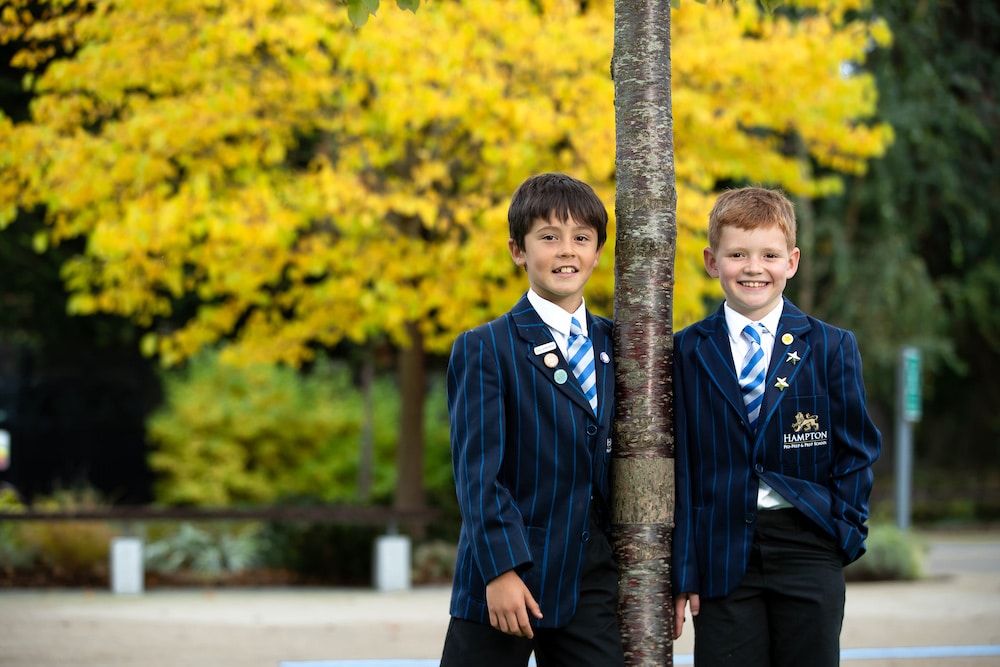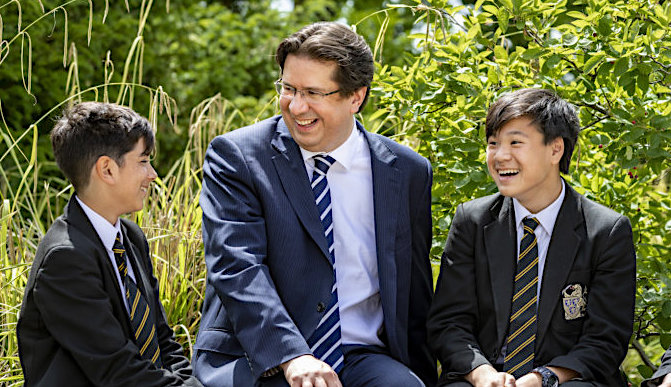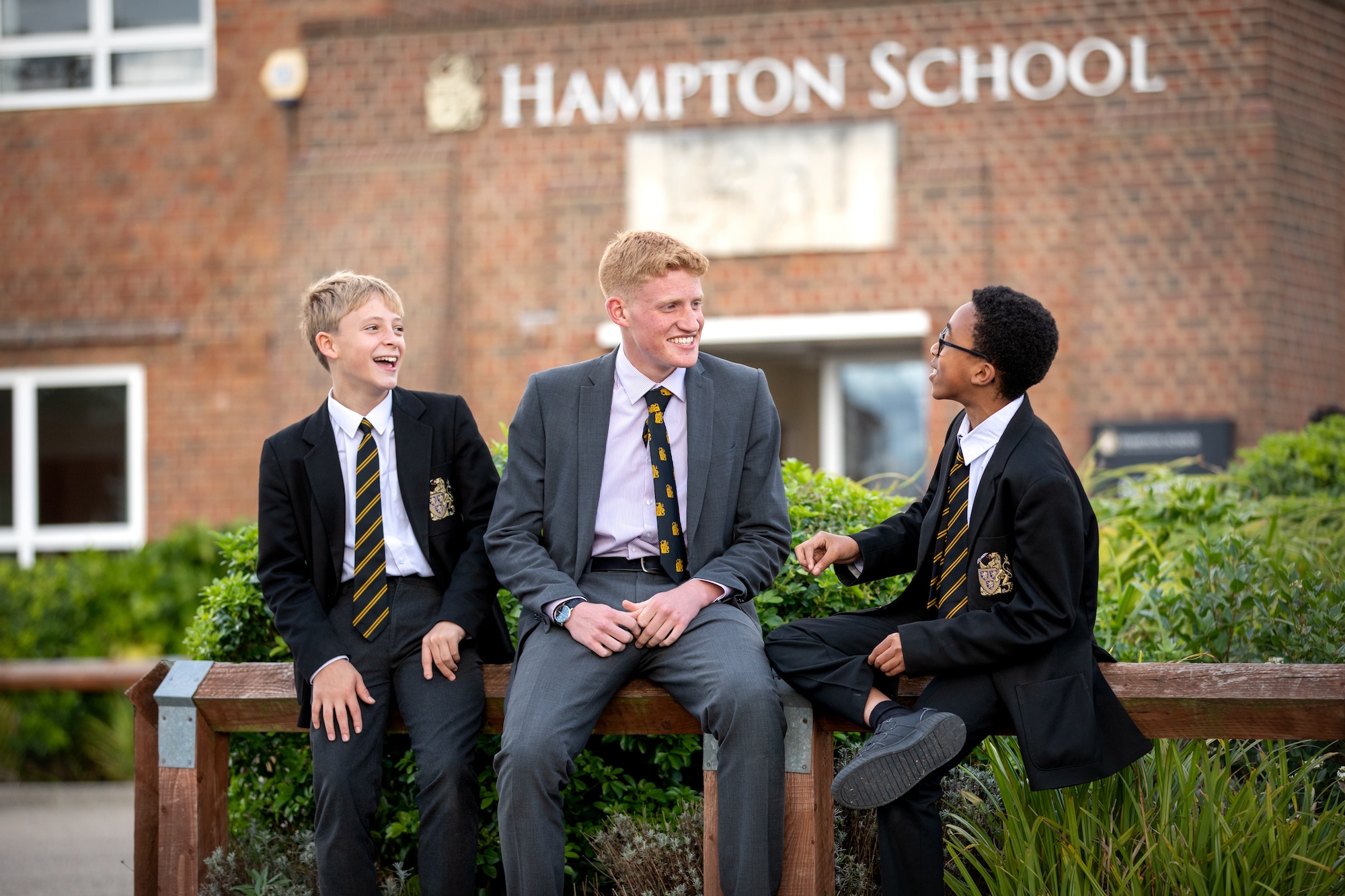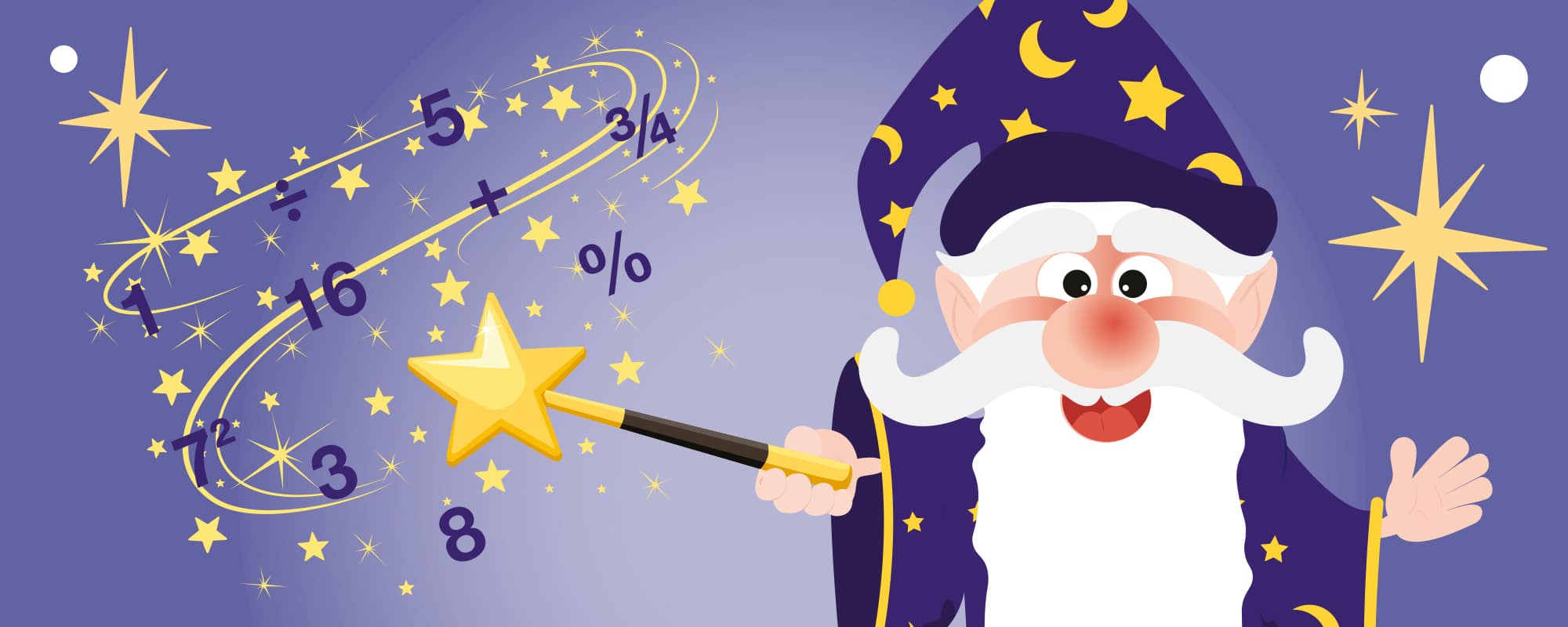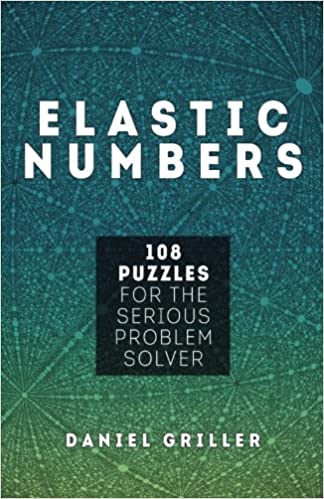On 27/09/21 the sum of the digits of the day (2+7) was equal to the number of the month (9). How many more times will this happen in 2021?
Hint: Look for other dates where (sum of the two digits of the day) = (month number). Check all months and possible days in 2021 where this can happen.
Solution: This will happen again on 19/10, 28/10 and 29/11; that is three more times.
Does there exist a number that is larger than its cube?
Hint: Think about what happens when you cube numbers greater than 1, between 0 and 1, and less than 0. Try plugging in a few examples to see when the number is bigger than its cube!
Solution: There exist lots of numbers larger than their cube: any number between 0 and 1, and any number less than -1; so the answer is yes.
How many square factors does 300 have?
Hint: First, find the prime factorization of 300. Then, figure out how many factors are perfect squares by choosing exponents that are even for each prime in the factorization.
Solution: The square factors of 300 are 1, 4, 25 and 100 – that is four
How many square numbers less than 1000 are also cube numbers?
Hint: A number that’s both a perfect square and a perfect cube must be a perfect sixth power (because 2 and 3’s least common multiple is 6). So, find all numbers like n6n^6n6 less than 1000.
Solution: Squares that are also cubes must be sixth powers (some integer raised to the power of six). There are only three such numbers less than 1000: 1, 64 and 729.
In how many ways can the letters in the word NOON be arranged?
Hint: Count the total arrangements of 4 letters, then divide by the factorial of the repeated letters’ counts to avoid overcounting identical arrangements.
Solution: The possible arrangements are NNOO, NONO, NOON, ONNO, ONON, OONN, so the answer is 6.
In how many ways can the letters in the word SCHOOL be arranged?
Hint:
First, count the total letters, then identify any repeated letters.
Use the formula:
total letters!factorials of each repeated letter’s count\frac{\text{total letters}!}{\text{factorials of each repeated letter’s count}}factorials of each repeated letter’s counttotal letters!
to find the number of distinct arrangements.
Solution: Suppose all six letters were different. Then there would be 6 ways to choose the first letter, then 5 ways to choose the second letter, then 4 ways to choose the third letter, and so on. This yields 6x5x4x3x2x1=720 arrangements. But in the word SCHOOL, two of the letters are identical, so 720 has counted every possible arrangement twice, and the answer is 360.
In a triangle, the interior angles are in the ratio 3:4:5. What is the size of the largest angle?
Hint: The sum of all interior angles in a triangle is 180°. If the angles are in ratio 3:4:5, add the parts (3 + 4 + 5), then find the value of one part by dividing 180 by that total. Multiply by 5 to get the largest angle.
Solution: There are 12 parts, and 180 degrees in total, so each part is worth 15 degrees. The largest angle corresponds to 5 parts, so is equal to 75 degrees.
What is the size of each interior angle in a regular 100-sided polygon?
Hint: Add up all the angles inside the 100-sided shape, then split that total equally into 100 parts. That’s the size of each angle.
Solution: The exterior angles of any polygon add to 360 degrees, so each exterior angle in a regular 100-sided polygon is 3.6 degrees, and hence each interior angle is equal to 180-3.6=4 degrees.
Over a period of four days, Ellie eats several strawberries. Each day after the first day, she eats twice as many strawberries as she did the day before. In total she eats 90 strawberries. How many strawberries did she eat on the last day?
Hint: If she eats xxx strawberries on day 1, then each next day is double the previous day. Write the total as x+2x+4x+8x=90x + 2x + 4x + 8x = 90x+2x+4x+8x=90, then solve for xxx. The last day is 8x8x8x.
Solution: Ellie ate 6, then 12, then 24, then 48 strawberries across the four days. So she ate 48 on the last day.
Over a period of four days, Taran eats lots of peas. Each day after the first day, he eats two thirds as many peas as he did the previous day. In total he eats 325 peas. How many peas did he eat on the first day?
Hint: Add the peas eaten on all four days like this: First day + two-thirds of first day + two-thirds of that + two-thirds of that = 325. Use xxx for the first day, write the sum, and solve for xxx.
Solution: Taran ate 135, then 90, then 60, then 40 peas across the four days. So he ate 135 on the first day.
In a hexagon, what is the greatest possible number of interior right-angles?
Hint: A hexagon’s interior angles must add up to 720 degrees. Try experimenting by adding right angles, but keep in mind that having all six right angles won’t work. How many right angles can you fit while keeping the total sum correct?
Solution: Six is impossible – the interior angle sum would then be 540 degrees instead of the required 720 degrees. The answer is five (make the hexagon look like a letter L).
Arthur thinks of a whole number. He squares it, then adds his original number, ending up with a prime. What number or numbers could he have been thinking of?
Hint: Start by trying small whole numbers. Square the number, then add the same number again. Check if the result is a prime number (a number that can only be divided by 1 and itself). Keep trying until you find the answer!
Solution: Whether Arthur begins with an odd number or an even number, the result will be even. But the only even prime is 2. It quickly becomes clear that large numbers (positive and negative) produce results that are also large; an analysis of numbers close to zero yields 1 and -2.
Over a period of four days, Ellie eats several strawberries. Each day after the first day, she eats twice as many strawberries as she did the day before. In total she eats 90 strawberries. How many strawberries did she eat on the last day?
Hint: Set up an equation based on the total number of strawberries Ellie eats, then simplify it to solve for x, which represents the number of strawberries eaten on the first day. Once you have x, multiply by 8 to find the number of strawberries she ate on the last day.
Solution: Ellie ate 6, then 12, then 24, then 48 strawberries across the four days. So she ate 48 on the last day.
Over a period of four days, Taran eats lots of peas. Each day after the first day, he eats two thirds as many peas as he did the previous day. In total he eats 325 peas. How many peas did he eat on the first day?
Hint: Factor out x from the equation, then solve the resulting equation for x to find the number of peas Taran ate on the first day.
Solution: Taran ate 135, then 90, then 60, then 40 peas across the four days. So he ate 135 on the first day.
Bananas come in bunches of 3 (small bunch) or 5 (large bunch). Tim wants to purchase exactly 32 bananas; how many different combinations of bunches could he purchase?
Hint: Try using different numbers of small and large bunches to make exactly 32 bananas!
Solution: The possible bunch combinations are 4 small and 4 large, or 9 small and 1 large, so there are just two combinations with a total of 32 bananas
How many three-digit numbers contain the digit 3?
Hint: Think about how many total three-digit numbers there are. Then, figure out how many don’t have the digit 3 in any place.
Solution: There are 9x10x10=900 three-digit numbers, of which 8x9x9=648 do not contain the digit 3, so the required total is 900-648=252.
On 27/09/21 the sum of the digits of the day (2+7) was equal to the number of the month (9). How many more times will this happen in 2021?
Hint: Look for other days in 2021 where the sum of the digits of the day equals the number of the month!
Solution: This will happen again on 19/10, 28/10 and 29/11; that is three more times
Does there exist a number that is larger than its cube?
Hint: Think about whether a number can be bigger than its cube by trying small positive numbers, negative numbers, and fractions!
Solution: There exist lots of numbers larger than their cube: any number between 0 and 1, and any number less than -1; so the answer is yes.
The reciprocal of a number is the result of dividing 1 by the number. For example, the reciprocal of 4 is 1/4. What is the reciprocal of 1/2 + 1/3?
Hint: Think about how you add fractions and what a reciprocal means. What do you need to do before finding the reciprocal?
Solution: 1/2 + 1/3 = 3/6 + 2/6 = 5/6, and the reciprocal of 5/6 is 6/5
A positive integer (whole number) n is divisible by 14 and 15. How many other positive integers are guaranteed to be factors of n?
Hint: Think about the numbers that divide both 14 and 15. What must a number divisible by both 14 and 15 also be divisible by? Consider the factors of 14 and 15, and how they combine.
Solution: Since n is divisible by 14 and 15, it must be divisible by the lowest common multiple of 14 and 15, which is 210. It must also be divisible by all the factors of 210: 1, 2, 3, 5, 6, 7, 10, 14, 15, 21, 30, 35, 42, 70, 105, 210. So there are 16 factors of 210, of which we have already counted the factors 14 and 15; hence there are 14 other positive integers guaranteed to be factors of n.
In how many ways can 5 apples be distributed between 3 boys, George, Kieran and Rohan, so that each child receives at least 1 apple?
Hint: First, give 1 apple to each child, because they all need at least 1. Now, how many apples are left? Think about how you can share the leftover apples with the children.
Solution: The possible distributions to George, Kieran and Rohan respectively are (1,1,3), (1,3,1), (3,1,1), (1,2,2), (2,1,2) and (2,2,1). So there are 6 ways to distribute the apples.
What is the smallest number of (possibly unequal) pieces into which you must cut a lemon cake, to be certain that the pieces can be split between 2, 3 or 4 people, with each person receiving the same amount of cake?
Hint: Think about cutting the cake into pieces that can be grouped in different ways. Try using a mix of different sized pieces!
Solution: There must be at least 4 pieces. With exactly 4 pieces, if they can be split fairly between 4 people, then they cannot be split fairly between 3 people. The same is true with exactly 5 pieces in total. But you could cut the cake into two quarters, two sixths and two twelfths; then the pieces could be split fairly between 2, 3 or 4 people. So the answer is 6.
On 27/09/21 the sum of the digits of the day (2+7) was equal to the number of the month (9). How many more times will this happen in 2021?
Hint: Look for other days where adding the digits of the day equals the month number
Solution: This will happen again on 19/10, 28/10 and 29/11; that is three more times
Does there exist a number that is larger than its cube?
Hint: Try small numbers and see if they are bigger than their cube. Think about what happens when you multiply a small number by itself several times!
Solution: There exist lots of numbers larger than their cube: any number between 0 and 1, and any number less than -1; so the answer is yes.
The reciprocal of a number is the result of dividing 1 by the number. For example, the reciprocal of 4 is 1/4. What is the reciprocal of 1/2 + 1/3? ?
Hint: First find the common denominator, then flip the result to find the reciprocal
Solution: Add 1/2 and 1/3 to finding the common denominator, then flip the result to find the reciprocal (just like turning the fraction upside down): 1/2 + 1/3 = 3/6 + 2/6 = 5/6, and the reciprocal of 5/6 is 6/5
A positive integer (whole number) n is divisible by 14 and 15. How many other positive integers are guaranteed to be factors of n?
Hint: Think about the smallest number that both 14 and 15 can divide evenly into (the least common multiple). Then think about the smaller numbers that divide into it (the factors)?
Solution: Since n is divisible by 14 and 15, it must be divisible by the lowest common multiple of 14 and 15, which is 210. It must also be divisible by all the factors of 210: 1, 2, 3, 5, 6, 7, 10, 14, 15, 21, 30, 35, 42, 70, 105, 210. So there are 16 factors of 210, of which we have already counted the factors 14 and 15; hence there are 14 other positive integers guaranteed to be factors of n.
The letters A, A, N, N are written on four tiles (one letter per tile) and placed in a bag. They are then drawn out of the bag at random, one at a time, and placed in a line from left to right. What is the probability that the tiles spell ANNA?
Hint: Start by thinking about the probability that the first tile you draw is an A. Then think about the probability of drawing two N’s in a row and what then is probability that the last letter will be A?
Solution: The probability that the first letter is A is 1/2. With an A removed, the probability the next two letters are both N’s is 2/3 x 1/2 = 1/3. With ANN removed, the last letter is always an A. So the probability of spelling ANNA is 1/2 x 1/3 = 1/6
What is the highest common factor of 117, 171 and 711?
Hint: Start by looking for a simple pattern, like the sum of the digits. Can each be divided by that number?
Solution: 117, 171 and 711 all have a digit sum of 9, so they are all multiples of 9. Dividing each by 9 leaves 13, 19 and 79, all of which are prime so have no common factors (other than 1). So the highest common factor is 9.
Insert two pairs of brackets into the expression 1-2-3-4 to make the result as large as possible.?
Hint: Think about how brackets change the order and remember that doing the maths inside the brackets first might change your answer.
Solution: The largest result is 6, so the best way to add brackets is: 1−((2−3)−4)
Divide 111,111,111 by 1,001,001 without a calculator.
Hint: Notice the patterns in the numbers
Solution: Here’s a cool trick! 1,001,001 can actually fit into 111,111,111 exactly 111 times. So: 111,111,111=1,001,001×111. To divide 111,111,111 by 1,001,001, you just reverse the multiplication: 111,111,111÷1,001,001=111. So, when you divide 111,111,111 by 1,001,001, the answer is 111!
How many square factors does 300 have?
Hint: Start by finding the factors of 300 (the numbers we can multiple together to get 300), then find the square numbers from these
Solution: The square factors of 300 are 1, 4, 25 and 100, so there are four factors
How many square numbers less than 1000 are also cube numbers?
Hint: A square number is when you multiply a number by itself. A cube number is when you multiply a number by itself twice. For example, 2×2×2=82 . Some numbers can be both a square and a cube. These numbers are special and are called sixth powers. This is because to be both, a number has to be like multiplying the same number six times. For example: 2×2×2×2×2×2=64, so 64 is both a square and a cube.
Solution: There are only three such numbers less than 1000: 1, 64 and 729

